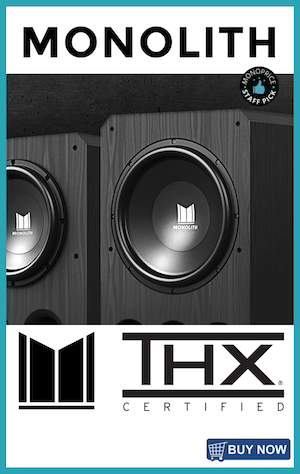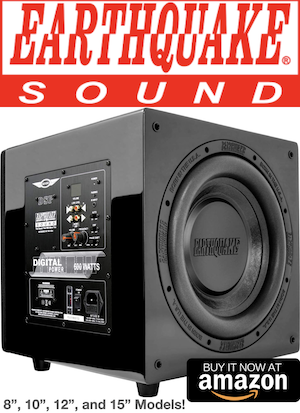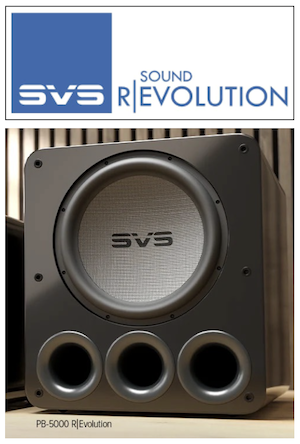-
AUDIO VIDEO PROCESSING, SETUP & ENVIRONMENTOfficial REW (Room EQ Wizard) Support Forum Audiolense User Forum Calibration Equipment Auto-EQ Platforms / Immersive Audio Codecs Video Display Technologies / Calibration AV System Setup and Support Listening Room / Home Theater Build Projects Room Acoustics and Treatments AV Showcase Movies / Music / TV / Streaming
-
AUDIO VIDEO DISCUSSION / EQUIPMENTHome Theater / Audio and Video - Misc Topics Essence For Hi Res Audio AV Equipment Advice and Pricing Awesome Deals and Budget AV Equipment AV Receivers / Processors / Amps UHD / Blu-ray / CD Players / Streaming Devices Two Channel Hi-Fi Equipment DIY Audio Projects Computer Systems - HTPC / Gaming HD and UHD Flat Screen Displays Projectors and Projection Screens AV Accessories Buy - Sell - Trade
Navigation
Install the app
How to install the app on iOS
Follow along with the video below to see how to install our site as a web app on your home screen.
Note: This feature may not be available in some browsers.
More options
You are using an out of date browser. It may not display this or other websites correctly.
You should upgrade or use an alternative browser.
You should upgrade or use an alternative browser.
Couple of questions regarding subwoofers
- Thread starter mk1981
- Start date
Well, the Behringer NX3000 (https://www.behringer.com/product.html?modelCode=P0CHS) IS a class D amp.
> About 80-100 Hz.
So you'll have to run it for some 1-1.5 octaves Regardless, even one pure sine wave freq. will "break" up and flex the cone, though with less disastrous results than a combined multy-freq. signal. Several compliments of such waves and you already have a Doppler effect too. No free meals. How much you care, perceive, or are bothered by these distortions is up to you.
Four drivers per box x 2 are 8 drivers in the room. One driver per box x 4 boxes are only four drivers in the room, hence double the excursion for each driver for the same, given sound level. (and everythng else being equal).
Ideally, time alignment should be identical for all sound sources, but here is a larger leeway for time allignment in woofers than there is, for example, with tweeters. The walls-refracted (and delayed) sound plays a far greater role in them.
So you'll have to run it for some 1-1.5 octaves Regardless, even one pure sine wave freq. will "break" up and flex the cone, though with less disastrous results than a combined multy-freq. signal. Several compliments of such waves and you already have a Doppler effect too. No free meals. How much you care, perceive, or are bothered by these distortions is up to you.
Four drivers per box x 2 are 8 drivers in the room. One driver per box x 4 boxes are only four drivers in the room, hence double the excursion for each driver for the same, given sound level. (and everythng else being equal).
Ideally, time alignment should be identical for all sound sources, but here is a larger leeway for time allignment in woofers than there is, for example, with tweeters. The walls-refracted (and delayed) sound plays a far greater role in them.
I figure it will be 20-80 Hz, so two octaves. I know there is potential for a lot of distortion, but I don't mind that much, I figure with the number of woofers and limited maximum excursion, these issues will be effectively mitigated.
Given that with relatively small rooms, one expects the subwoofers to excite room modes rather than propagate as sound waves, so as I understand it, time alignment may be largely meaningless.
Considering the output of just a single subwoofer, I think I might even start with just four drivers in two subwoofers and add one or more only if it they're really turn out to be necessary.
Given that with relatively small rooms, one expects the subwoofers to excite room modes rather than propagate as sound waves, so as I understand it, time alignment may be largely meaningless.
Considering the output of just a single subwoofer, I think I might even start with just four drivers in two subwoofers and add one or more only if it they're really turn out to be necessary.
If you still want 4 units per box against the wall, but don't like downward-firing drivers into the floor, you can make the 4th woofer fire upward (don't let the cat climb up on it though; some suitable grille - which I dislike - can help). The box shouldn't be a cube, an upright shape (or horizontal, if you have room) is better with unequal sides. Probably about 200L volume might do, but that needs to be calculated. W600xD500xH800mm might be a starting point (or narrower and taller if room allows or dictates).
The drivers you posted may perhaps go down to 20Hz but with a marked diminished output at that freq., I think. As to room modes (directed, diagonal, etc.) - you'll get them in any room and these can be calculated. But as I and others found out many times real life results differ from calculated ones. The story is that anything present in the room, furniture, etc. do interfere with the pure calculations. You'll need to test.
F = c/2 * sqrt(p^2/L^2 + q^2/W^2 + r^2/H^2)
----------------------------------------------------------
F= Frequency
c = speed of sound (1130 feet per second or 344 meters per second)
sqrt = Square Root
^2 = squared
L = Length of Room
W = Width of Room
H = Height of Room
Values for p, q and r are p=1, q=0, r=0 for axial mode; p=2, q=0, r=0 for 2nd axial mode; p=1, q=1, r=0 for first tangential modes.
This is a basic formula, there are more 2nd degree modes, harmonics, etc. and more evolved formulas.
Some acousticians call these modes "room excitation" which sounds grand but I think is a bit of a misnomer. On a time axis, they diminish, not increase or "excite", as their energy diminishes. But they can create momentary peaks and nulls at certain freqs. Their harmonics are more diminished, but still present. That's why some bass-treat their room with acoustic absorbers in corners and other "strategic" points.
Then there's the Q you choose for the subwoofer, inner damping materials, bracing, and so much more. The Q can be manipulated to a degree with miniDSP. The difference would roughly be between a "tak" attack type bass note to a "thak" down to a "Wwahh" attack sound - and anything in between. Hifi subwoofers are not car subwoofers. The latter is a noisy environment that drowns and masks most - possibly all - distortions. Bottom line, this is a business of compromises between many parameters. Good luck.
The drivers you posted may perhaps go down to 20Hz but with a marked diminished output at that freq., I think. As to room modes (directed, diagonal, etc.) - you'll get them in any room and these can be calculated. But as I and others found out many times real life results differ from calculated ones. The story is that anything present in the room, furniture, etc. do interfere with the pure calculations. You'll need to test.
F = c/2 * sqrt(p^2/L^2 + q^2/W^2 + r^2/H^2)
----------------------------------------------------------
F= Frequency
c = speed of sound (1130 feet per second or 344 meters per second)
sqrt = Square Root
^2 = squared
L = Length of Room
W = Width of Room
H = Height of Room
Values for p, q and r are p=1, q=0, r=0 for axial mode; p=2, q=0, r=0 for 2nd axial mode; p=1, q=1, r=0 for first tangential modes.
This is a basic formula, there are more 2nd degree modes, harmonics, etc. and more evolved formulas.
Some acousticians call these modes "room excitation" which sounds grand but I think is a bit of a misnomer. On a time axis, they diminish, not increase or "excite", as their energy diminishes. But they can create momentary peaks and nulls at certain freqs. Their harmonics are more diminished, but still present. That's why some bass-treat their room with acoustic absorbers in corners and other "strategic" points.
Then there's the Q you choose for the subwoofer, inner damping materials, bracing, and so much more. The Q can be manipulated to a degree with miniDSP. The difference would roughly be between a "tak" attack type bass note to a "thak" down to a "Wwahh" attack sound - and anything in between. Hifi subwoofers are not car subwoofers. The latter is a noisy environment that drowns and masks most - possibly all - distortions. Bottom line, this is a business of compromises between many parameters. Good luck.
Popular tags
20th century fox
4k blu-ray
4k uhd
4k ultrahd
action
adventure
animated
animation
bass
blu-ray
calibration
comedy
comics
denon
dirac
dirac live
disney
dolby atmos
drama
fantasy
hdmi 2.1
home theater
horror
kaleidescape
klipsch
lionsgate
marantz
movies
onkyo
paramount
pioneer
rew
romance
sci-fi
scream factory
shout factory
sony
stormaudio
subwoofer
svs
terror
thriller
uhd
ultrahd
ultrahd 4k
universal
value electronics
warner
warner brothers
well go usa












